Electrolux EIDW1815US Bedienungsanleitung
Electrolux
Spülmaschine
EIDW1815US
Lies die bedienungsanleitung für Electrolux EIDW1815US (4 Seiten) kostenlos online; sie gehört zur Kategorie Spülmaschine. Dieses Handbuch wurde von 12 Personen als hilfreich bewertet und erhielt im Schnitt 5.0 Sterne aus 6.5 Bewertungen. Hast du eine Frage zu Electrolux EIDW1815US oder möchtest du andere Nutzer dieses Produkts befragen? Stelle eine Frage
Seite 1/4

Dishwasher
Installation Instructions
INSTALLER: Leave Installation Instructions with owner.
OWNER: Read your dishwasher Use & Care Guide. It contains important safety
information for operating this appliance. It also has many suggestions for getting
the best results from your dishwasher. Keep these instructions with your Use &
Care manual for future reference.
If you have an installation problem, contact your dealer or installer. You are
responsible for providing adequate electrical, exhausting and other connecting
facilities.
Skill Level: Installation of this dishwasher requires basic mechanical and electrical
skills. Proper installation is the responsibility of the installer. Product failure due to
improper installation is not covered under the warranty.
Completion Time: 1 to 3 Hours. New installations require more time than
replacement installations.
Safety Precautions: The following warnings, cautions, and the important safety
instructions DO NOT cover all possible conditions and situations that may occur.
It’s your responsibility to use common sense, caution, and care when installing,
maintaining, and operating the dishwasher DO NOT attempt to install or operate
your unit until you have read the safety precautions in this manual. Safety items
throughout this manual are labeled with a Danger, Warning, or Caution based on
the risk type.
Printed in U.S.A. P/N: A16738701 RevA (1904)
WARNING
Read and observe all CAUTIONS and WARNINGS shown throughout these
instructions before installing dishwasher. This guide will help you anticipate drain,
water, and electrical connections, and help you select the best location for the
dishwasher.
As with all equipment using electricity, water and moving parts, potential hazards
exist. To safely operate this appliance, become familiar with its operation and
exercise care when using it.
1Before You Begin
WARNING
Install and store the dishwasher inside, away from exposure to weather.
DO NOT install the dishwasher in a location where the water may freeze (where the
temperature falls below 32°F (0°C). Frozen water in the hoses, pipes, or other
components may damage the dishwasher.
Definitions
This is the safety alert symbol. It is used to alert you to potential personal
injury hazards. Obey all safety messages that follow this symbol to avoid possible
injury or death.
Safety Precautions: The following warnings, cautions, and the important safety
instructions do not cover all possible conditions and situations that may occur.
It’s your responsibility to use common sense, caution, and care when installing,
maintaining, and operating the dishwasher DO NOT attempt to install or operate
your unit until you have read the safety precautions in this manual. Safety items
throughout this manual are labeled with a Danger, Warning, or Caution based on
the risk type.
WARNING
FIRE HAZARD
Do not install the dishwasher on a carpet.
2Preparing for Installation
Materials and Tools
Parts Supplied*
• Installation brackets (x2)
• ST3.5*9 screws (x2)
for installation bracket
• ST4*14 screws (x2)
for installation bracket
• Condensation strip
• Adjustment caps (x2)
• Cable tie for drain hose
• Adjustable toeplate
Parts Needed for Installation (Not
supplied)
• Twist on wire connectors (x3)
• Strain relief
• Tape (electrical tape and standard
duct tape)
• Hot water supply line
• 90° Elbow
• Tube fittings
• Air gap
• Rubber connector
• Hose clamp
• Power cable
(if not able to hard wire)
• PTFE thread seal tape or sealing
compound
Tools needed for installation
• Drill and appropriate bits
• Safety glasses
• Gloves
• Flashlight
• Adjustable wrench
• Wire stripper
• Pliers
• Nipper
• Measuring tape
• Pencil
• Phillips screwdriver
• Flat screwdriver
• Tubing cutter
• Utility knife
• Hole saw set
• Level
• Torx® T20 driver
• Hex L-wrench set
Before starting the installation, prepare all the necessary tools and parts
required to install the dishwasher. This will save installation time and simplify the
installation process.
* Provided with the dishwasher. Check that all parts are present when unpacking
the dishwasher.
WARNING
TIP OVER HAZARD
• DO NOT use dishwasher until completely installed.
• DO NOT push down or place excessive weight on open door.
DANGER
DANGER indicates an imminently hazardous situation which, if not avoided, will
result in death or serious injury.
WARNING
WARNING indicates a potentially hazardous situation which, if not avoided,
could result in death or serious injury.
CAUTION
CAUTION indicates a potentially hazardous situation which, if not avoided, may
result in minor or moderate injury.
IMPORTANT
Indicates installation, operation, or maintenance information which is
important but not hazard-related.
NOTE
Water supply line, power cable and drain hose will run through the bottom
channels from the back to the front connections.
Enclosure dimensions
NOTE
This dishwasher is designed to be enclosed on the top and on both sides by
a standard residential kitchen cabinet unit. The installation enclosure must be
clean and free of any obstructions.
The enclosure must be at least 17.7 inches wide 23 inches deep and 32.5 inches
high. For the front door of the dishwasher to be flush with the leading edge of the
counter top, the counter top must be at least 23 inches deep.
IMPORTANT
DO NOT use plastic tubing. Plastic tubing can deteriorate over time and cause
a leak inside the tube fitting.
Copper tubing with a compression fitting or a flexible stainless steel braided
hot water supply line should be used for the hot water supply line.
3Roughing In
NOTE
New installation
If the dishwasher is a new installation, most of the installation work must be
done before the dishwasher is moved into place.
Replacement
If the dishwasher is replacing an old dishwasher, you must check the existing
dishwasher connections for compatibility with the new dishwasher. Replace the
existing connections as necessary.
1. Make sure your location has the right drain, water, and electrical outlets to
make the connections. DO NOT install unit under a cooktop range, damage
to plastic tub will occur.
IMPORTANT
If unit is to be placed in a corner, there must be at least a 2” side clearance to
open door.
• The location must have a solid floor that is able to support the weight of
the dishwasher.
• The location must be near a sink with easy access to the water supply,
drain, and electrical outlet.
• The dishwasher must be installed within 9.8 ft (3 m) of the sink.
• The location must have sufficient space for the dishwasher door to open
easily and provide enough space between the dishwasher and the cabinet
sides of at least 0.1 in (2 mm).
• The back wall of the enclosure must be free of obstructions.
2. Remove any carpet from area to provide motor clearance. Floor should be
flat and free of any obstruction.
IMPORTANT
Drain, water, and electrical lines should be roughed-in before going any
further.
For new installations only
1. Using a hole saw, cut a hole into the side of the cabinet that holds the sink for
water line supply, drain hose and power cables, as shown below.
2. If the base inside the sink cabinet is raised above the kitchen floor and is
higher than the connections on the dishwasher, make a hole in the base
inside the cabinet and in the cabinet side.
NOTE
Depending on where your electrical outlet is, you may need to cut a hole in the
opposite cabinet side.
17.7" (450mm)
minimum
23" (580mm)
minimum
32.5" (825mm)
minimum
WARNING
ELECTRIC SHOCK HAZARD
Observe all local codes and ordinances for electrical and
plumbing connections. All electrical and plumbing work should
be performed by qualified persons. Failure to follow this warning
could result in death or serious injury.
4Connections (Water and Electrical)
1. Adjust the water heater to deliver water between 120°F (49°C)–135°F
(57.2°C). This temperature range provides the best washing result and
shortest cycle time. Temperature should not exceed 135°F (57.2°C) to
prevent damage to dishes.
2. Turn OFF water supply valve.
3. Seal the hot water supply line connections using Teflon tape or sealing
compound to stop any water leakage.
IMPORTANT
The hot water supply line pressure must be between 20 psi–120 psi
(0.14 MPa–0.82 MPa).
Preparing Hot Water Line Connection
Preparing Electrical Line Connection
WARNING
ELECTRIC SHOCK HAZARD
The electrical service must conform with all state, municipal,
provincial and/or local codes and ordinances and the latest
edition of the National Electrical Code, or in Canada, the
Canadian Electrical Code CSA C22.1 latest edition.
WARNING
ELECTRIC SHOCK HAZARD
Direct connections require:
• The use of flexible, armored or non-metallic sheathed, copper
wire with a grounding wire that meets the wiring requirements
for your local codes and ordinances.
• The use of strain relief method provided with the wiring junction
box or install a U.L.-listed/CSA-certified clamp connector to
the wiring junction box. If using conduit, use a U.L.-listed/CSA-
certified conduit connector.
Hot water
supply line
Power
cable
5 ~ 7 in.⅓ ⅓
(135 ~ 185mm)
5 1/3~7 1/3 in.
(135 ~ 185mm)
Hot Water
Supply Line
Power Cable
Dishwasher bottom
Side View Front View
17.6” (450 mm)22.6” (575 mm)
32.4” 825 mm
5Unpacking and Inspection
IMPORTANT
Unpack the dishwasher in an open area free of obstruction both around the
carton and overhead. Retain the carton and all of the packing materials until
the dishwasher is fully installed and operational to ensure you have removed all
the product’s components from the carton prior to disposal.
1. Cut or unbuckle the four straps securing the top of
the carton.
2. Lift the carton up and over the dishwasher and
place it on the floor.
3. Place the straps and all packing materials from
around the dishwasher inside the empty carton,
inspecting them for any signs of damage.
4. Lift the dishwasher from the carton tray, and then
place it on the floor.
5. Locate and set aside the dishwasher’s installation
parts package and toeplate. The toeplate is
attached to bottom of the carton tray. Place carton tray into the carton.
WARNING
ALWAYS LIFT THE DISHWASHER TO MOVE IT. Sliding it over rough
surfaces can damage the dishwasher’s feet and sliding the feet over finished
surfaces can, in some cases, damage that finish or the underlying surface.
IMPORTANT
DO NOT, under any circumstances, remove the sound-absorbent padding
that surrounds the exterior of the tub of the dishwasher.
7. There is also packing inside the dishwasher that you may want to leave in
place until the dishwasher is installed.
Unpacking the dishwasher
Inspecting the dishwasher
Mechanical inspection
1. Check the plastic base assembly to ensure that it is intact.
2. Check the dishwasher’s feet to ensure they are in place and can be adjusted
so you can level and secure the dishwasher.
3. Check all the visible components on the bottom of the dishwasher to ensure
they are intact and secure.
4. Check the door latch, the operation of the hinges, and confirm the door is
properly secured to the dishwasher.
5. Remove the two screws securing kickplate to dishwasher and remove
kickplate. Set aside kickplate and screws to replace when unit is installed.
Plumbing inspection
1. Check the hot water connection on the left side at the front of the base of the
dishwasher. The mounting plate should be secured to the front of the base,
the threads inside the connection should be smooth and shiny, and the area
should be clean and free of any debris.
2. Check the plastic Brake and Sensor cases to ensure these assemblies are
not cracked and that all connections are secure.
3. Check the drain hose for any holes or deformities that could allow a water
leak during draining.
Electrical inspection
1. Confirm the junction box cover is secured to the junction box on the front
right-side of the base of the dishwasher.
2. Confirm the electrical box was not damaged during shipping and that it is
secured to the base of the dishwasher.
Visual inspection
1. Confirm there are no dents or scratches on the front of the dishwasher.
2. Check the edges of the doors for any roughness or cracking.
3. Check the control panel to ensure it is clear and unscratched, and that all the
control markers are in their proper places.
6 Installing the Dishwasher
Preparing the dishwasher
WARNING
ELECTRIC SHOCK HAZARD
Disconnect electrical power at the fuse box or circuit breaker
box before removing old dishwasher or beginning new
installation. Failure to follow this warning could result in death
or serious injury.
WARNING
ELECTRIC SHOCK HAZARD
Prior to removal of original dishwasher and the installation of your new
unit, make sure to switch off your circuit breaker. Do not connect the
dishwasher until you have completed the installation. Connecting the
power cable is the last step when installing the dishwasher.
Teflon tape or
sealing compound
90°
Elbow
Inlet Valve
CAUTION
Do not overtighten the 90° elbow. Doing so may damage the water inlet
valve and cause a water leak.
Verify that the circuit breaker and water supply valve are off before proceeding
with the following steps.
1. Make sure there are no kinks in the water hose and that it is not bent at any
angles that could constrict the flow of water.
2. Remove the junction box cover located at the bottom front right of the
dishwasher using a screwdriver, and install the strain relief. Keep the junction
box cover to replace after wiring is completed.
WARNING
ELECTRIC SHOCK HAZARD
• Electrically ground the dishwasher.
• Connect the ground wire to the green ground connector in the
junction box.
• DO NOT use extension cord.
To reduce the risk of electrical shock, fire, or personal injury, the
installer must ensure that the dishwasher is completely enclosed at
the time of installation.
Strain relief
Junction box
3. Connect the 90° elbow joint to the inlet valve from the front of the dishwasher.
Use Teflon tape or sealing compound to secure.
4. Secure dishwasher to the countertop if the countertop is made of
wood or a material that is not damaged by drilling.
To attach the two installation brackets to the top of the dishwasher, insert
each bracket tab into the corresponding slot on the top of the dishwasher.
Tighten using screws ST3.5*9 provided with the unit.
1
23
Product dimensions
1
23
NOTE
Remove toeplate and parts package from the bottom of the carton tray.
6. Remove the bag that protects the dishwasher during shipping.
Secure dishwasher to the cabinet side wall if the countertop can be
damaged by top mounting the unit. To attach the two installation brackets
to the side of the dishwasher, remove the adjustment caps from the sides of
the unit. Use pliers to snap off the end of the long leg of the bracket. Insert
each bracket tab into the corresponding slot on the side of the dishwasher
and tighten using screws ST3.5*9 provided with the unit.
Required parts
Confirm that you have all the parts supplied by the manufacturer (see the Material
and Tools section of this Installation Instruction).

7
Leveling the Dishwasher
IMPORTANT
Dishwasher must be level for proper dish rack operation and wash perfor
mance.
1. Open the door and hold level against the top of the tub to check if it is level
side to side. Adjust the front legs until level.
2. Remove the lower basket and place the level in the basket channel to check
if it is level front to back. Adjust the rear legs until level.
3. Open the door and check if the door hits the tub of the dishwasher. Adjust
front leveling legs to align the door to the tub.
WARNING
DO NOT place the dishwasher on the water supply line, drain hose, or power
cable. Make sure none of the lines get folded or twisted during installation.
5. Adjust the four leveling legs at the bottom of the dishwasher after measuring
the height of the cabinet opening from under the countertop to the floor. (See
Step 8, Leveling the Dishwasher.)
6. Locate the hot water supply line and the power cable.
7. Place the dishwasher so the power cable is in the center channel of the
dishwasher base. To prevent the electrical cable from being pinched when
you push the dishwasher into place, use duct tape or cable ties to secure the
electrical cable to the channel.
8
Securing the Dishwasher
IMPORTANT
Make sure the tub is not distorted by pressure from the screws. If the tub is
distorted, loosen the screws a little.
You must fix the dishwasher to the countertop or cabinet side walls for additional
stability and safety.
If securing to the countertop (wood or other material that will not be
damaged by drilling), follow the instructions below.
1. Put a large towel into the bottom of the dishwasher to prevent wood shavings
or a dropped screw from falling into the dishwasher.
2. Verify that the installation brackets are firmly attached to the top of the unit
using screws ST3.5*9 provided with the unit.
3. Carefully drill screw holes into the underside of the counter top by passing the
drill bit up through the screw holes in each installation bracket, making sure
the diameter of the hole is smaller than the diameter of the screw.
4. Insert screws ST4*14 up through the brackets, and then tighten to secure the
dishwasher to the countertop.
If securing to the side cabinets (the countertop is made of granite,
marble, or any other material that can be damaged by drilling), follow the
instructions below.
1. Put a large towel into the bottom of the dishwasher to prevent wood shavings
or a dropped screw from falling into the dishwasher.
2. Remove the adjustment caps with the tip of a screwdriver. The caps are just
inside the tub near the middle of the tub on both sides.
9
Connecting the Drain Hose
1. Check the parts on the sink to which the drain hose will be connected.
2. There are several ways to insert the drain hose into the drain hose connector
of the sink. You must connect the drain hose in accordance with the water
pipe installation regulations in your region.
NOTE
To prevent leaks or drainage problems, make sure the drain hose is not dam-
aged, kinked, or twisted.
WARNING
• Be careful when cutting off the end of the drain hose as there is a risk of
injury. Clean around the sink’s drain connection so that it does not damage
the hose. Check for any foreign items in the drain hose and remove them.
• When arranging the drain hose, make sure the drain hose is not cut, torn, or
broken by any sharp edges of the floor, the product itself, or the cabinet. A
damaged drain hose causes a leak.
IMPORTANT
• Take caution not the damage the drain hose when installing the dishwasher
on the floor, wall,or cabinet.
• Do not cut the wrinkled area of the drain hose to fit the size. When arranging
the drain hose, take caution not to contact on sharp edges of the cabinet or
under-sink.
3. The drain hose molded end will fit 5/8”, 3/4”, or 1” diameter connections on
the air gap, waster tee, or disposer. Cut on the marked line as required for
your installation.
Cutting Lines
1" 3/4" 5/8"
4. Slide a hose clamp over the end of the drain hose. Attach the drain hose to
the sink connector, slide the hose clamp to the end of the hose, and then
tighten the hose clamp.
NOTE
You must use a hose clamp. Failure to do so may cause water leakage.
5. Secure the drain hose to the sink wall using cable ties or other fastening
material.
Secure the
drain hose
with cable.
6. If there is no air gap, make sure to hang the middle of the drain hose well
above the sink cabinet base to prevent backflow.
B
A
Countertop
Front
Drain hose
Φ
40mm
MAX 1000mm
7. When drilling a hole for the drain hose on the cabinet wall, take caution not to
damage the drain hose by sharp edges of the hole.
• On wooden walls, use sand paper to soften the edges.
• On metal walls, use insulation tape or duct tape to cover the sharp edges
around the hole.
10
Wiring Connections
WARNING
Each colored wire should be connected to the corresponding wire of the same
color. WHITE should be connected to WHITE, BLACK to BLACK, and GREEN
to GREEN.
5. Connect the WHITE wire to the WHITE wire and the GREEN to the GREEN in
the same manner.
7. Replace the junction box cover on the dishwasher.
WARNING
FIRE HAZARD
To avoid fire hazard, make sure electrical work is properly installed. Only qualified
electricians should perform electrical work.
WARNING
ELECTRIC SHOCK HAZARD
To avoid electrical shock, do not work on an energized circuit.
Doing so could result in serious injury or death. Only qualified
electricians should perform electrical work. Do not attempt any
work on the dishwasher electric supply circuit until you are certain
the circuit is de-energized.
6. Recheck each wire to ensure it is connected correctly and securely.
11
Completing the Installation
1. Open the door and remove all foam, paper packaging, and unnecessary
parts.
2. Turn the circuit breaker ON.
3. Open the water supply valve to supply water to the dishwasher.
4. Turn on the dishwasher, and then select and run a cycle.
WARNING
Make sure to check for water leakage on both ends of the water supply line
and drain hose connector.
IMPORTANT
Check that the power turns on correctly and that there is NO water leakage
while the dishwasher is operating.
• If no errors occur while it is operating, turn OFF the dishwasher, and then
install the kickplate.
• If an error has occurred, turn off the dishwasher, close the water supply
valve, and refer to the user manual or contact local service center.
5. Insert the black adjustable toeplate under the kickplate and install onto the
unit. Make sure the top kickplate wiper edge is located at the bottom of the
kickplate and that the edge of the adjustable toeplate reaches to the floor.
Secure with the two kickplate screws previously removed (ST3.9*13).
1
2
NOTE
Turn leveling leg clockwise (left) to lower the leg and counter clockwise (right) to
raise the leg.
NOTE
• The screws or tub spacer cap may fall into the dishwasher while you are
working with the door open. Cover the interior of the dishwasher with a
towel to prevent any screws from falling into the dishwasher. If any foreign
items such as a screw get into the dishwasher, it may cause noise, an
abnormal operation, damage, or a malfunction.
• Use a magnetic screwdriver to help prevent screws from falling into the
dishwasher.
• If a foreign item such as a screw gets into the dishwasher and you are
unable to remove it. the dishwasher needs to be disassembled. Contact a
qualified service technician for this.
1. Before connecting the power cable to the dishwasher, make sure the circuit
breaker is OFF.
2. In the junction box located at the front bottom right of the dishwasher, find
the three power wires from the dishwasher including the grounding line.
3. Pass the power cable through the strain relief, and then into the junction box.
4. Connect the BLACK wire of the dishwasher to the BLACK wire of the power
cable by inserting both into a wire nut and then rotating the wire connector.
Strain relief
Junction box
Power cable
Black to black
White to white
Green to green
(Ground to ground)
WARNING
DO NOT place hands under the dishwasher when moving. Always hold under
the tub NOT the bottom of the unit. Keep clear of sharp edges.
Connecting to drain without a garbage disposal unit with and without an
air gap.
Drain hose2
Air gap No air gap
Hose clamp
Hose clamp
Connecting to drain with a garbage disposal unit with and without
an air gap.
Drain hose 2
Air gap
Hose clamp
No air gap
Hose clamp
12
Specifications
Product Specifications
Capacity 8 place settings
Dimensions 17.6 x 22.6 x 32.4 inches
450 x 575 x 825 mm
(W x D x H)
Power Supply 120v, 60Hz
Rated Power Usage wash motor 100W,
heater 700W
Water feed pressure 20 psi–120 psi
(0.14 MPa–0.82 MPa)
Adjustment
caps
Adjustment
caps
6. Replace the tub adjustment caps.
Drain
Hose 2
Hot Water
Supply Line
8. Pull the drain hose through the hole in the sink cabinet side wall. Keep it free
of kinks.
9. Make sure the hot water supply line is not twisted, and then connect the hot
water supply line to the elbow joint.
10. Slide the dishwasher carefully into the installation space. If possible, gently
pull any excess lengths of water supply line, drain hose, or power cable back
as you move the dishwasher. Get a second or third person to help you do
this if necessary.
• If a longer drain hose is required, add up to 42” of length for a total of 10
ft. to the factory installed hose. Use 5/8” or 7/8” inside diameter hose and
a coupler to connect the two hose ends. Secure the connection with hose
clamps.
• Secure the drain hose to the air gap, waste tee, or disposer with clamps.
3. Drill a hole into the sides of the kitchen cabinet on both sides by carefully
passing a drill bit through the screw holes exposed by the removal of the
spacer caps, and then drilling into the side of the cabinet. Make sure the hole
you drill is smaller than the diameter of the screw and that the drill bit does
not strike the sides of the spacer cap holes.
4. Verify that the installation brackets are firmly attached to the side of the unit.
5. Insert screws ST4*14 into the holes, and then tighten to secure the
dishwasher to the cabinet.
IMPORTANT
DO NOT cut corrugated portion of line.
NOTE
The top of the drain hose must be less than 39.3” (1000mm).
Hose
Clamp
Coupler Hose
Clamp

Lave-vaisselle
Notice d’installation
NOTE À L’INSTALLATEUR : Veuillez laisser la notice d’installation au
consommateur.
NOTE AU CONSOMMATEUR : Veuillez lire le guide d’utilisation et d’entretien de
votre lave-vaisselle. Il renferme des messages importants sur l’utilisation sécuri-
taire de cet appareil. Il contient également plusieurs suggestions pour obtenir les
meilleurs résultats possibles avec votre lave-vaisselle. Conservez ces instructions
avec votre guide d’utilisation et d’entretien pour pouvoir vous y référer plus tard.
Pour tout problème d’installation, communiquez avec votre détaillant ou votre
installateur. Il vous incombe de fournir les raccords nécessaires : électriques, de
sortie et autres.
Compétences requises : L’installation de ce lave-vaisselle nécessite des
compétences de base dans les domaines de la mécanique et de l’électricité.
L’installateur est responsable de l’installation correcte de l’appareil. Les défaillanc-
es du produit attribuables à une installation inadéquate ne sont pas couvertes par
la garantie.
Temps requis pour l’installation : Entre 1 et 3 heures. Une nouvelle installation
de lave-vaisselle exige plus de temps que le remplacement d’un ancien modèle.
Mesures de sécurité : Les avertissements et mises en garde, de même que les
consignes de sécurité importantes NE COUVRENT PAS toutes les conditions et
situations possibles pouvant survenir. Il est de votre responsabilité de faire appel à
votre bon sens et de faire preuve de prudence et de minutie lors de l’installation,
de l’entretien et de l’utilisation de votre lave-vaisselle. NE TENTEZ PAS d’installer
ou d’utiliser votre appareil avant d’avoir lu les consignes de sécurité de ce manuel.
Ce manuel contient des consignes de sécurité assorties d’une mention DANGER,
AVERTISSEMENT ou ATTENTION selon le type de risque.
Imprimé aux É.-U. N° de pièce A16738702 Rév.A (194)
AVERTISSEMENT
Lisez et tenez compte de toutes les ATTENTION et AVERTISSEMENTS figurant
dans ces instructions avant d’installer le lave-vaisselle. Ce guide vous aidera à
prévoir les raccordements d’eau, d’électricité et d’évacuation et à choisir le meilleur
emplacement pour le lave-vaisselle.
Comme c’est le cas pour tout équipement utilisant de l’électricité, de l’eau et des
pièces mobiles, il existe des risques potentiels. Pour utiliser cet appareil de façon
sécuritaire, familiarisez-vous avec son fonctionnement et faites preuve de prudence
lorsque vous l’utilisez.
1Avant de commencer
AVERTISSEMENT
Installez et rangez le lave-vaisselle à l’intérieur, à l’abri des intempéries.
N’INSTALLEZ PAS le lave-vaisselle dans un endroit où l’eau pourrait geler (là
où la température descend sous 0°C (32°F). De l’eau gelée dans les boyaux,
les tuyaux et autres composants peut endommager le lave-vaisselle.
Définitions
Voici le symbole d’alerte de sécurité. Il vous avertit lorsqu’il y a des risques
de blessures corporelles. Respectez toutes les consignes de sécurité qui suivent
ce symbole afin d’éviter les blessures ou la mort.
Mesures de sécurité : Les avertissements et mises en garde, de même que les
consignes de sécurité importantes ne couvrent pas toutes les conditions et situations
possibles pouvant survenir. Il est de votre responsabilité de faire appel
à votre bon sens et de faire preuve de prudence et de minutie lors de l’installation,
de l’entretien et de l’utilisation de votre lave-vaisselle. NE TENTEZ PAS d’installer
ou d’utiliser votre appareil avant d’avoir lu les consignes de sécurité de ce manuel.
Ce manuel contient des consignes de sécurité assorties d’une mention DANGER,
AVERTISSEMENT ou ATTENTION selon le type de risque.
AVERTISSEMENT
RISQUE D’INCENDIE
N’installez pas le lave-vaisselle sur un tapis.
2Préparation en vue de l’installation
Matériel et outils
Pièces fournies*
• Supports de montage (x2)
• Vis ST3.5*9 (x2)
pour support d’installation
• Vis ST4*14 (x2)
pour support d’installation
• Bande de condensation
• Capuchons de réglage (x2)
• Collier de serrage pour tuyau
d’évacuation
• Plaque de protection réglable
Pièces nécessaires pour
l’installation (non fournies)
• Connecteurs à visser sur le fil (x3)
• Réducteur de tension
• Ruban (ruban électrique et ruban
adhésif standard)
• Conduite d’eau chaude
• Coude de 90°
• Raccords de tuyauterie
• Entrefer
• Connecteur en caoutchouc
• Collier de serrage
• Câble d’alimentation (s’il est
impossible de câbler directement)
• Ruban en PTFE pour filetage ou
produit d’étanchéité
Outils nécessaires pour
l’installation
• Perceuse et forets appropriés
• Lunettes de sécurité
• Gants
• Lampe de poche
• Clé à molette
• Pince à dénuder
• Pinces
• Pince coupante
• Ruban à mesurer
• Crayon
• Tournevis Phillips
• Tournevis plat
• Coupe-tube
• Couteau tout usage
• Jeu de scie cylindrique
• Niveau
• Tournevis Torx® T20
• Ensemble de clés hexagonales en L
Avant de commencer l’installation, préparez les outils et pièces nécessaires pour
l’installation du lave-vaisselle. Cela permet de gagner du temps et de simplifier
l’installation.
* Pièces fournies avec le lave-vaisselle. Assurez-vous que toutes les pièces sont
présentes lorsque vous déballez le lave-vaisselle.
AVERTISSEMENT
RISQUE DE BASCULEMENT
• N’UTILISEZ PAS le lave-vaisselle tant que son installation n’est pas terminée.
• N’UTILISEZ PAS sur la porte ouverte et n’y placez pas de poids excessif.
DANGER
La mention DANGER signale une situation dangereuse imminente qui, si elle
n’est pas évitée, entraînera la mort ou des blessures graves.
AVERTISSEMENT
La mention AVERTISSEMENT signale une situation potentiellement dangereuse
qui, si elle n’est pas évitée, pourrait entraîner la mort ou des blessures graves.
ATTENTION
La mention ATTENTION signale une situation potentiellement dangereuse qui,
si elle n’est pas évitée, pourrait entraîner des blessures légères ou de gravité
modérée.
IMPORTANT
Cette mention signale des renseignements sur l’installation, le fonctionnement ou
l’entretien qui sont importants mais non liés à un risque.
REMARQUE
La conduite d’eau, le câble électrique et le tuyau de vidange doivent passer
par les coulisses inférieures de l’arrière aux connexions avant.
Dimensions de l’ouverture
REMARQUE
Ce lave-vaisselle est conçu de façon à ce que le dessus et les deux côtés soient
encastrés dans une armoire de cuisine résidentielle standard. L’ouverture prévue
pour l’installation doit être propre et exempte de toute obstruction.
L’ouverture doit mesurer au moins 450 mm (17,7 po) de largeur, 580 mm (23
po) de profondeur et 825 mm (32,5 po) de hauteur. Pour que la porte avant du
lave-vaisselle soit à égalité avec le bord avant du comptoir, celui-ci doit être d’une
profondeur d’au moins 580 mm (23 po).
IMPORTANT
N’UTILISEZ PAS d e tube en plastique. Les tubes en plastique peuvent se
dégrader avec le temps et causer des fuites à l’intérieur du raccord de tube.
Pour la conduite d’eau chaude, utilisez un tube en cuivre avec raccord de
compression ou un flexible en acier inoxydable tressé.
3Pose préliminaire
REMARQUE
Nouvelle installation
S’il s’agit d’une nouvelle installation de lave-vaisselle, la majeure partie du
travail doit être effectuée avant que le lave-vaisselle soit inséré en place.
Remplacement
Si le lave-vaisselle remplace un ancien modèle, vous devez vérifier si les
connexions de l’ancien lave-vaisselle sont compatibles avec celles du nouveau
lave-vaisselle. Remplacez au besoin les connexions existantes.
1. Assurez-vous que l’emplacement choisi est à proximité des sources
nécessaires pour les raccordements d’entrée d’eau, d’électricité et
d’évacuation. N’INSTALLEZ PAS l’appareil sous une plaque de cuisson, car
la cuve en plastique pourrait être endommagée.
IMPORTANT
Si vous prévoyez installer l’appareil dans un coin, il doit y avoir un dégagement
d’au moins 50 mm (2 po) pour ouvrir la porte.
• Le plancher de l’emplacement choisi doit pouvoir supporter le poids du
lave-vaisselle.
• Choisissez un endroit situé près d’un évier, à proximité d’une alimentation
en eau, d’un système d’évacuation et d’une prise électrique.
• Le lave-vaisselle doit être installé à un maximum de 3 m (9,8 pi) de l’évier.
• L’emplacement doit vous permettre d’ouvrir facilement la porte du lave-
vaisselle et offrir un espace suffisant entre l’appareil et les parois l’entourant
au moins 2 mm (0,1 po).
• Le mur arrière de l’ouverture doit être exempt de toute obstruction.
2. Retirez tout tapis de la zone afin d’obtenir le dégagement requis pour le
moteur. Le plancher doit être plat et exempt de toute obstruction.
IMPORTANT
Les conduites d’eau, d’électricité et d’évacuation doivent être posées de façon
préliminaire avant de poursuivre.
Pour les nouvelles installations seulement :
1. À l’aide d’une scie circulaire, percez un trou sur le côté de l’armoire où
se trouve l’évier pour l’alimentation en eau, le tuyau de vidange et les fils
électriques, tel qu’illustré ci-dessous.
2. Si la base à l’intérieur de l’armoire de l’évier est surélevée par rapport au
plancher de cuisine et est plus haute que les raccordements du lave-vaisselle,
percez un trou dans la base à l’intérieur et sur la paroi de l’armoire.
REMARQUE
Selon l’endroit où se trouve votre prise de courant, vous devre« peut-être
percer un trou du côté opposé de l’armoire.
450 mm (17,7 po)
minimum
580 mm (23 po)
minimum
825 mm (32,5 po)
minimum
AVERTISSEMENT
RISQUE DE CHOC ÉLECTRIQUE
Observez tous les codes et règlements locaux en vigueur concernant
les raccordements électriques et de plomberie. Tous les travaux
d’électricité et de plomberie ne doivent être effectués que par des
personnes qualifiées. Le non-respect de cet avertissement pourrait
entraîner la mort ou des blessures graves.
4Raccordements (eau et électricité)
1. Ajustez le chauffe-eau pour qu’il fournisse de l’eau entre 49°C et 57,2°C (entre
120°F et 135°F). Cette plage de température produit les meilleurs résultats
de lavage et la durée de cycle la plus courte. Afin de ne pas endommager la
vaisselle, la température ne devrait pas dépasser 57,2°C (135°F).
2. Fermez la valve d’alimentation en eau.
3. Enrobez les raccords de la conduite d’eau chaude de ruban Téflon ou d’un
produit d’étanchéité pour empêcher les fuites d’eau.
IMPORTANT
La pression de la conduite d’eau chaude doit se situer entre 20 et 120 lb/po²
(entre 0,14 et 0,82 MPa).
Préparation du raccordement de la conduite
d’eau chaude
Préparation du branchement électrique
AVERTISSEMENT
RISQUE DE CHOC ÉLECTRIQUE
L’installation électrique doit être conforme à tous les codes et
règlements municipaux, provinciaux et locaux, ainsi qu’à la plus
récente édition du Code national de l’électricité ou, au Canada, à la
plus récente édition du Code canadien de l’électricité CSA C22.1.
AVERTISSEMENT
RISQUE DE CHOC ÉLECTRIQUE
Les connexions directes nécessitent :
• L’utilisation d’un câblage en cuivre flexible, armé ou gainé d’un
matériau non métallique, avec un fil de mise à la terre et conforme
aux exigences de câblage des codes et règlements locaux en
vigueur.
• L’utilisation du collier de serrage fourni avec la boîte de jonction
du câblage ou l’installation d’un raccord à collier de serrage
homologué UL/CSA sur la boîte de jonction du câblage. Si
vous utilisez un conduit, servez-vous d’un raccord de conduit
homologué UL/CSA.
Conduite
d'eau
chaude 135 ~ 185 mm
(5 ~ 7 po.)⅓ ⅓
Câble
d'alimentation
Bas du lave-vaisselle
Conduite
d'eau
chaude 135 ~ 185 mm
(5 ~ 7 po.)⅓ ⅓
Câble
d'alimentation
Vue latérale Vue de face
450 mm (17,6 po)575 mm (22,6 po)
825 mm (32,4 po)
5Déballage et inspection
IMPORTANT
Déballez le lave-vaisselle dans un espace ouvert et exempt d’obstruction aut-
our et au-dessus de la boîte de carton. Conservez la boîte de carton et tout le
matériel d’emballage jusqu’à ce que le lave-vaisselle soit complètement installé
et fonctionnel pour vous assurer d’avoir retiré tous les composants du produit
de la boîte avant de mettre celle-ci au rebut.
1. Coupez ou débouclez les quatre courroies fixant le
haut de la boîte de carton.
2. Levez la boîte de carton, par dessus le lave-
vaisselle, et placez-la sur le plancher.
3. Placez les courroies et tout le matériel d’emballage
entourant le lave-vaisselle à l’intérieur de la boîte
de carton vide, en les inspectant pour déceler tout
signe de dommage.
4. Retirez le lave-vaisselle du plateau de carton et
posez-le sur le plancher.
5. Localisez et mettez de côté l’ensemble des pièces
d’installation du lave-vaisselle et la plaque de protection. La plaque de
protection est fixée au fond du plateau de carton. Placez le plateau de carton
dans la boîte de carton.
AVERTISSEMENT
SOULEVEZ TOUJOURS LE LAVE-VAISSELLE POUR LE DÉPLACER.
Si vous faites glisser le lave-vaisselle sur des surfaces rugueuses, ses pieds
risquent d’être endommagés. Dans certains cas, si vous faites glisser les pieds
sur des surfaces finies, leur fini risque d’être endommag.
IMPORTANT
NE RETIREZ JAMAIS, en aucune circonstance, le revêtement d’absorption
acoustique entourant l’extérieur de la cuve du lave-vaisselle.
7. Il y a aussi du matériel d’emballage à l’intérieur du lave-vaisselle; laissez-le en
place jusqu’à ce que le lave-vaisselle soit installé.
Déballage du lave-vaisselle
Inspection du lave-vaisselle
Inspection mécanique
1. Vérifiez la base de plastique pour vous assurer qu’elle est intacte.
2. Vérifiez les pieds du lave-vaisselle pour vous assurer qu’ils sont bien en place et
qu’ils peuvent être ajustés pour mettre le lave-vaisselle de niveau et le fixer.
3. Vérifiez tous les composants visibles au bas du lave-vaisselle pour vous
assurer qu’ils sont intacts et bien fixés.
4. Vérifiez le loquet de la porte, le fonctionnement des charnières et assurez-
vous que la porte est correctement fixée au lave-vaisselle.
5. Retirez les deux vis fixant la plaque de protection au lave-vaisselle et retirez la
plaque de protection. Gardez la plaque de protection et les vis pour remettre
la olaque de protection en place une fois l’appareil installé.
Inspection de la plomberie
1. Vérifiez le raccordement de la conduite d’eau chaude du côté gauche sur le
devant de la base du lave-vaisselle. Cette plaque de montage doit être fixée
au devant de la base, le filetage à l’intérieur de la connexion doit être lisse et
brillant et la zone doit être propre et complètement exempte de débris.
2. Vérifiez les boîtiers de frein et capteur pour vous assurer qu’ils ne sont pas
fissurés et que toutes les connexions sont solides.
3. Inspectez le tuyau de vidange à la recherche de trous ou de déformations
pouvant entraîner des fuites d’eau durant l’évacuation.
Inspection électrique
1. Assurez-vous que le couvercle de la boîte de jonction est en place sur la
boîte de jonction du côté avant droit de la base du lave-vaisselle.
2. Vérifiez que la boîte électrique n’a pas été endommagée durant le transport
et qu’elle est fixée à la base du lave-vaisselle.
Inspection visuelle
1. Assurez-vous que le devant du lave-vaisselle n’est pas cabossé ou égratigné.
2. Inspectez les bords de la porte à la recherche de rugosités ou de fissures.
3. Vérifiez le panneau de commande pour vous assurer qu’il n’est pas égratigné
ou endommagé et que les marqueurs de commande sont aux bons endroits.
6 Installation du lave-vaisselle
Préparation du lave-vaisselle
AVERTISSEMENT
RISQUE DE CHOC ÉLECTRIQUE
Coupez l’alimentation électrique à la boîte de fusibles ou à la
boîte de disjoncteur avant de retirer l’ancien lave-vaisselle ou
de commencer une nouvelle installation. Le non-respect de cet
avertissement pourrait entraîner la mort ou des blessures graves.
AVERTISSEMENT
RISQUE DE CHOC ÉLECTRIQUE
Avant de procéder au retrait de l’ancien lave-vaisselle et à l’installation
du nouveau, prenez soin de fermer le disjoncteur. Ne raccordez pas le
lave-vaisselle avant d’avoir terminé l’installation. Le raccordement du câble
d’alimentation est la dernière étape de l’installation du lave-vaissell.
Ruban Téflon
ou produit d'étanchéité
Coude
de 90°
Valve
d'entrée
ATTENTION
NE SERREZ PAS trop le coude de 90°. Sinon, cela pourrait endommager la
valve d’entrée d’eau et causer une fuite d’eau.
Assurez-vous que le disjoncteur est coupé et la valve d’alimentation en eau
fermée avant de passer aux étapes suivantes.
1. Assurez-vous que le flexible d’eau ne présente pas de nœuds et qu’il n’est
pas plié à un angle qui entraverait le débit d’eau.
2. À l’aide d’un tournevis, retirez le couvercle de la boîte de jonction située
à l’avant du lave-vaisselle, en bas à droite, puis installez le réducteur de
tension. Conservez le couvercle de la boîte de jonction pour le remettre en
place une fois l’installation du câblage terminée.
AVERTISSEMENT
RISQUE DE CHOC ÉLECTRIQU
• Effectuez la mise à la terre du lave-vaisselle.
• Raccordez le fil de mise à la terre au connecteur vert de mise à la
terre dans la boîte de jonction.
• N’UTILISEZ PAS de rallonge.
Pour réduire les risques de choc électrique, d’incendie ou de
blessures, l’installateur doit s’assurer que le lave-vaisselle est
complètement encastré au moment de l’installation.
Réducteur
de tension
Boîte de
jonction
3. Raccordez le coude de 90° à la valve d’entrée sur le devant du lave-vaisselle.
Utilisez du ruban Téflon ou un produit d’étanchéité pour le fixer.
4. Fixez le lave-vaisselle au comptoir si celui-ci est en bois ou fait d’un
matériau qui ne sera pas endommagé par le perçage.
Fixez les supports de montage du lave-vaisselle en insérant chaque languette
de support dans la fente correspondante du dessus du lave-vaisselle. Serrez
au moyen des vis ST3.5*9 fournies avec l’appareil.
1
23
Dimensions du produit
1
23
REMARQUE
Retirez la plaque de protection et l’ensemble de pièces du fond du plateau de
carton.
6. Retirez le sac servant à protéger le lave-vaisselle durant le transport.
Fixez le lave-vaisselle à la paroi latérale de l’armoire si le comptoir
risque d’être endommagé lors de la fixation de l’appareil. Pour fixer les
deux supports de montage aux côtés du lave-vaisselle, retirez les capuchons
de réglage des côtés de l’appareil. Utilisez une pince pour arracher l’extrémité
de la branche longue du support. Insérez chaque languette de support dans
la fente correspondante du côté du lave-vaisselle et serrez au moyen des vis
ST3.5*9 fournies avec l’appareil.
Pièces requises
Vérifiez que vous avez toutes les pièces fournies par le fabricant (voir la section
Matériel et outils de cette notice d’installation).
Produktspezifikationen
| Marke: | Electrolux |
| Kategorie: | Spülmaschine |
| Modell: | EIDW1815US |
Brauchst du Hilfe?
Wenn Sie Hilfe mit Electrolux EIDW1815US benötigen, stellen Sie unten eine Frage und andere Benutzer werden Ihnen antworten
Bedienungsanleitung Spülmaschine Electrolux

8 Oktober 2024

7 Oktober 2024

30 September 2024

28 September 2024

24 September 2024

22 September 2024

15 September 2024

9 September 2024

7 September 2024

5 September 2024
Bedienungsanleitung Spülmaschine
- Koenic
- Sôlt
- Ariston Thermo
- Euromaid
- Iberna
- Cata
- Schulthess
- Cecotec
- Jackson
- Logik
- Mainstreet Equipment
- Benavent
- CDA
- Amica
- Robinhood
Neueste Bedienungsanleitung für -Kategorien-
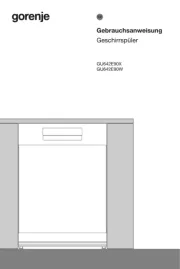
10 August 2025
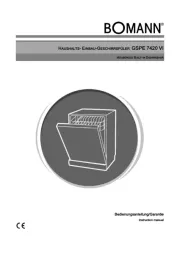
10 August 2025

10 August 2025
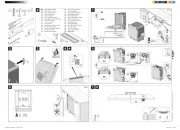
10 August 2025
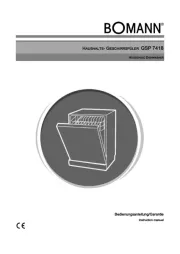
10 August 2025

10 August 2025

10 August 2025

10 August 2025
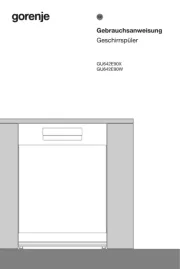
9 August 2025

9 August 2025